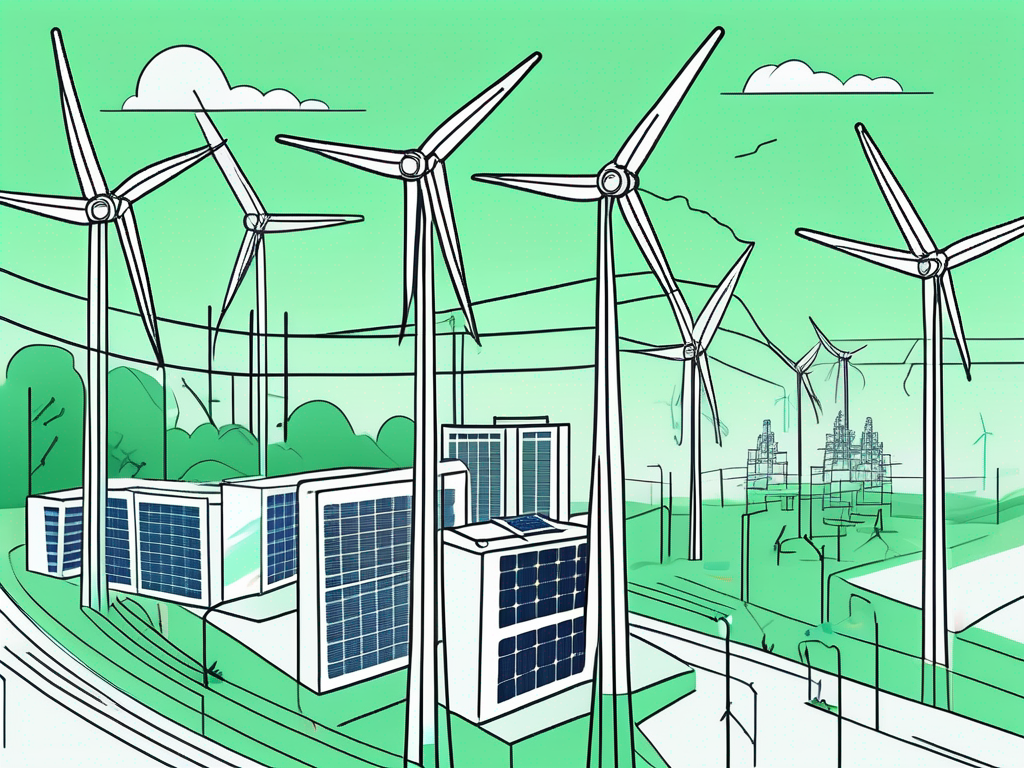.svg)
How AI Agents Help Utilities Optimise Energy Distribution
.svg)

In an era where energy efficiency and sustainability are paramount, the utility sector is increasingly turning to artificial intelligence (AI) to enhance energy distribution. AI agents, with their ability to process vast amounts of data and make real-time decisions, are transforming how energy is distributed, managed, and consumed. This transformation not only improves operational efficiency but also contributes to a more sustainable future by reducing waste and optimising resource use.
The Role of AI in Energy Distribution
Understanding AI Agents
AI agents are sophisticated software programs designed to perform tasks autonomously. In the context of energy distribution, these agents analyse data from various sources, such as smart meters, weather forecasts, and grid sensors, to make informed decisions. Their ability to learn from historical data and adapt to new information makes them invaluable in managing the complexities of modern energy systems.
These agents operate on algorithms that allow them to predict energy demand, identify potential issues, and optimise the flow of electricity across the grid. By doing so, they help utilities maintain a balance between supply and demand, ensuring that energy is distributed efficiently and reliably.
Real-Time Data Processing
One of the key advantages of AI agents is their capacity to process real-time data. This capability is crucial in the energy sector, where conditions can change rapidly due to factors like weather fluctuations or unexpected demand spikes. AI agents can quickly analyse incoming data and adjust energy distribution accordingly, preventing outages and reducing the need for costly interventions.
Real-time data processing also enables predictive maintenance, allowing utilities to identify and address potential issues before they escalate into significant problems. This proactive approach not only enhances the reliability of the energy grid but also extends the lifespan of infrastructure components.
Benefits of AI in Energy Optimisation
Efficiency and Cost Reduction
By optimising energy distribution, AI agents help utilities reduce operational costs. They achieve this by minimising energy losses during transmission and distribution, which are common challenges in traditional grid systems. With AI, utilities can better match energy supply with demand, reducing the need for expensive peak-time energy generation.
Moreover, AI-driven optimisation can lead to significant savings by decreasing the reliance on fossil fuels and enhancing the integration of renewable energy sources. This not only cuts costs but also supports environmental sustainability goals, making the energy sector more resilient and future-proof.
Enhanced Grid Stability
AI agents contribute to grid stability by continuously monitoring and adjusting energy flows. They can detect anomalies or potential threats to the grid, such as equipment failures or cyber-attacks, and respond swiftly to mitigate risks. This ensures a stable and reliable energy supply, which is crucial for both residential and industrial consumers.
Furthermore, AI can facilitate the integration of distributed energy resources, such as solar panels and wind turbines, into the grid. By managing these resources effectively, AI agents help maintain grid stability even as the energy landscape becomes more decentralised and complex.
Challenges and Considerations
Data Privacy and Security
While AI offers numerous benefits, it also raises concerns about data privacy and security. Utilities must ensure that the data collected and processed by AI agents is protected against breaches and unauthorised access. Implementing robust cybersecurity measures is essential to safeguard sensitive information and maintain consumer trust.
Additionally, utilities need to comply with regulations and standards related to data protection. This involves not only securing data but also ensuring transparency in how it is used and shared. By addressing these concerns, utilities can harness the full potential of AI while maintaining public confidence.
Integration and Interoperability
Integrating AI agents into existing energy systems can be challenging, particularly when dealing with legacy infrastructure. Utilities must ensure that AI solutions are compatible with current technologies and can operate seamlessly alongside traditional systems. This requires careful planning and investment in both hardware and software upgrades.
Interoperability is another critical consideration, as AI agents often need to communicate with various devices and platforms. Ensuring that these systems can work together effectively is essential for maximising the benefits of AI-driven energy optimisation.
The Future of AI in Energy Distribution
Advancements in AI Technology
As AI technology continues to evolve, its applications in energy distribution are expected to expand. Future advancements may include more sophisticated algorithms capable of handling even greater volumes of data and making more accurate predictions. This will further enhance the efficiency and reliability of energy systems, supporting the transition to a more sustainable energy future.
Additionally, the development of AI-powered tools for consumer engagement could empower individuals to manage their energy usage more effectively. By providing insights and recommendations, these tools can help consumers reduce their carbon footprint and contribute to broader sustainability efforts.
Collaboration and Innovation
The successful implementation of AI in energy distribution will require collaboration between utilities, technology providers, and regulatory bodies. By working together, these stakeholders can develop innovative solutions that address the challenges and opportunities presented by AI. This collaborative approach will be key to unlocking the full potential of AI in transforming the energy sector.
Innovation will also play a crucial role in driving the adoption of AI technologies. By fostering a culture of experimentation and embracing new ideas, the energy sector can continue to evolve and adapt to the changing landscape, ensuring a secure and sustainable energy future for all.
Conclusion
AI agents are revolutionising the way utilities manage and distribute energy, offering significant benefits in terms of efficiency, cost reduction, and grid stability. While challenges remain, particularly in areas such as data security and system integration, the potential of AI to transform the energy sector is undeniable. As technology advances and collaboration increases, AI will play an increasingly vital role in optimising energy distribution and supporting the transition to a more sustainable and resilient energy future.
Let's
Let’s discuss how we can bring reinvigorated value and purpose to your brand.







.svg)